Heard of the phrase “Art for Art’s Sake?” It is a simple expression for the philosophy that “true” art is divorced from any didactic, moral, or utilitarian function. The basic idea is that art is by definition aesthetical and thus can have no other purpose. In addition, art’s role is not to educate or to enlighten someone. It exists just for itself.
Oscar Wilde is considered the father of aesthetics. The phrase l’art pour l’art (“art for art’s sake”) was coined by the philosopher Victor Cousin, in 1818. According to him and several other philosophers of the century, social and political themes are irrelevant and should not be used in art making unless they render the final product “beautiful”.
This approach to art was elucidated in the 19th century by the Aesthetic Movement that promoted pure beauty and aesthetic values by accentuating visual and sensual qualities of art rather than practical, socio-political, moral or narrative considerations. So art from this movement didn’t give emphasis to deeper meaning.
History and Origin
The aesthetic movement flourished in Britain in the 1870s and 1880s. In painting it was exemplified by J.M. Whistler, Albert Moore and certain works by Frederic, Lord Leighton. Japanese art and culture was an important influence, especially on Whistler and aesthetic design. Aestheticism shared certain affinities with the French Symbolist movement, fostered the Arts and Crafts Movement, and sponsored Art Nouveau. From 1875 the ideals of aestheticism were commercialized by the Liberty store in London, which later also popularized Art Nouveau.
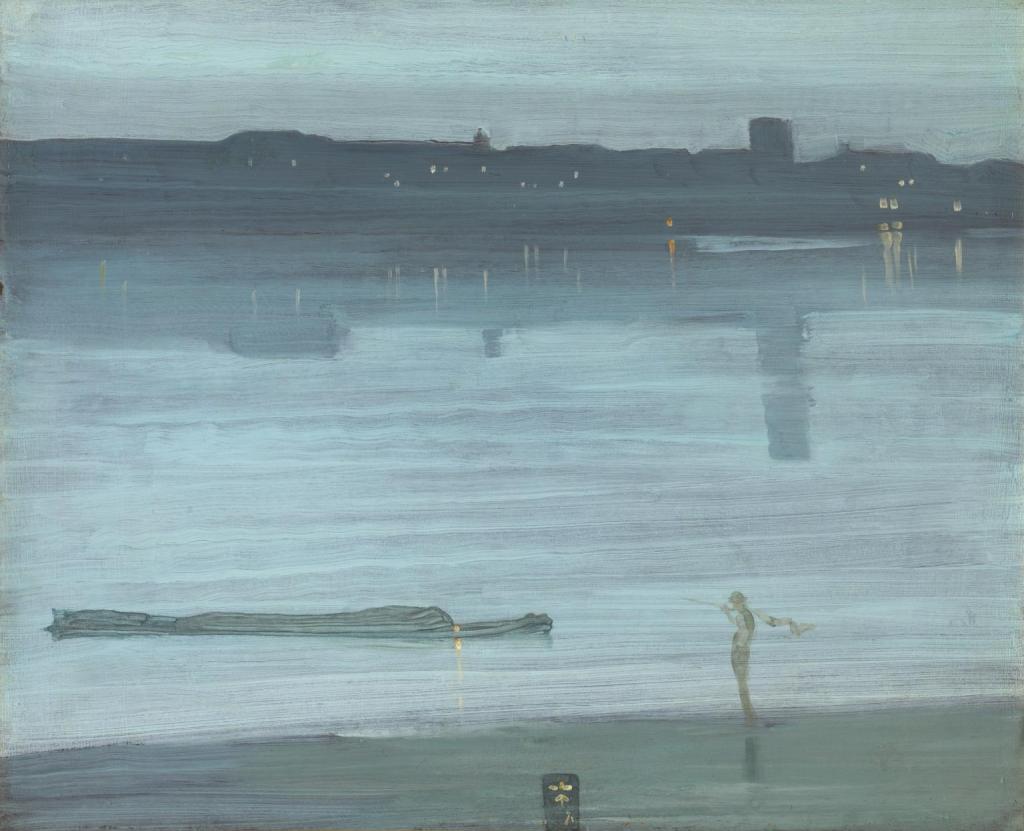
Nocturne: Blue and Silver – Chelsea 1871 James Abbott McNeill Whistler 1834-1903 Bequeathed by Miss Rachel and Miss Jean Alexander 1972 http://www.tate.org.uk/art/work/T01571 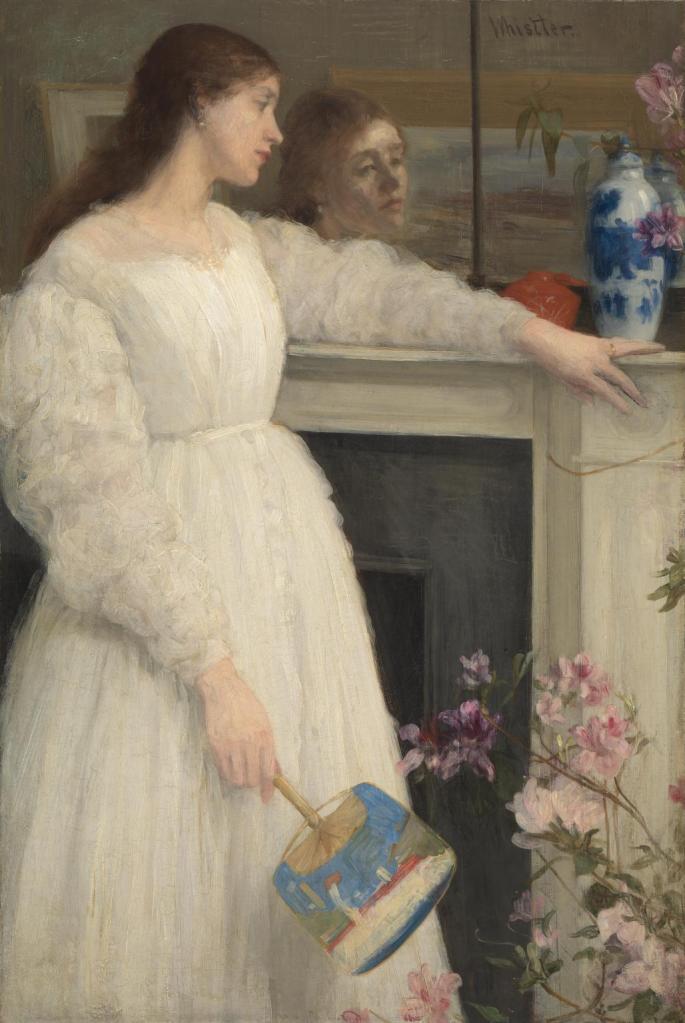
Symphony in White, No. 2: The Little White Girl 1864 James Abbott McNeill Whistler 1834-1903 Bequeathed by Arthur Studd 1919 http://www.tate.org.uk/art/work/N03418
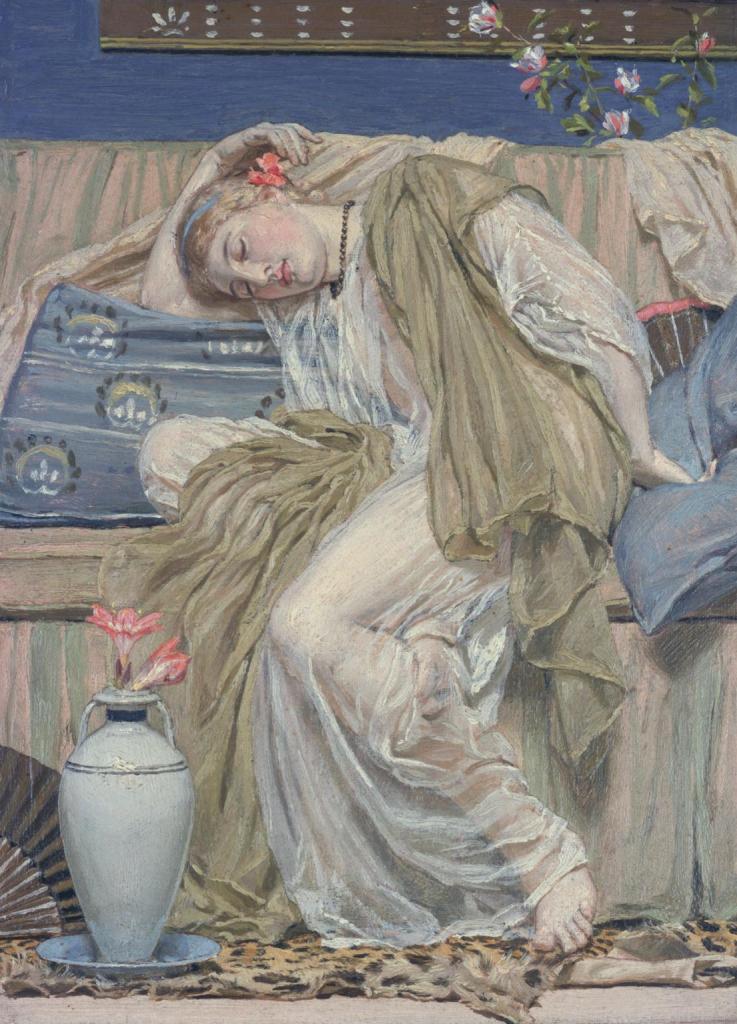
A Sleeping Girl c.1875 Albert Moore 1841-1893 Presented by Arthur Grogan 1986 http://www.tate.org.uk/art/work/T04877 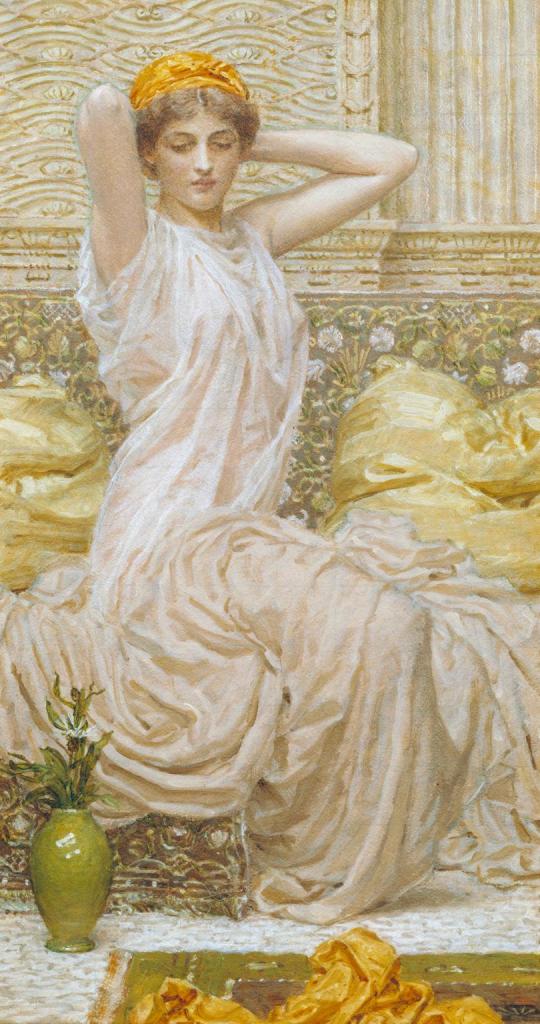
The Toilette 1886 Albert Moore 1841-1893 Bequeathed by W. Graham Robertson 1948 http://www.tate.org.uk/art/work/N05876
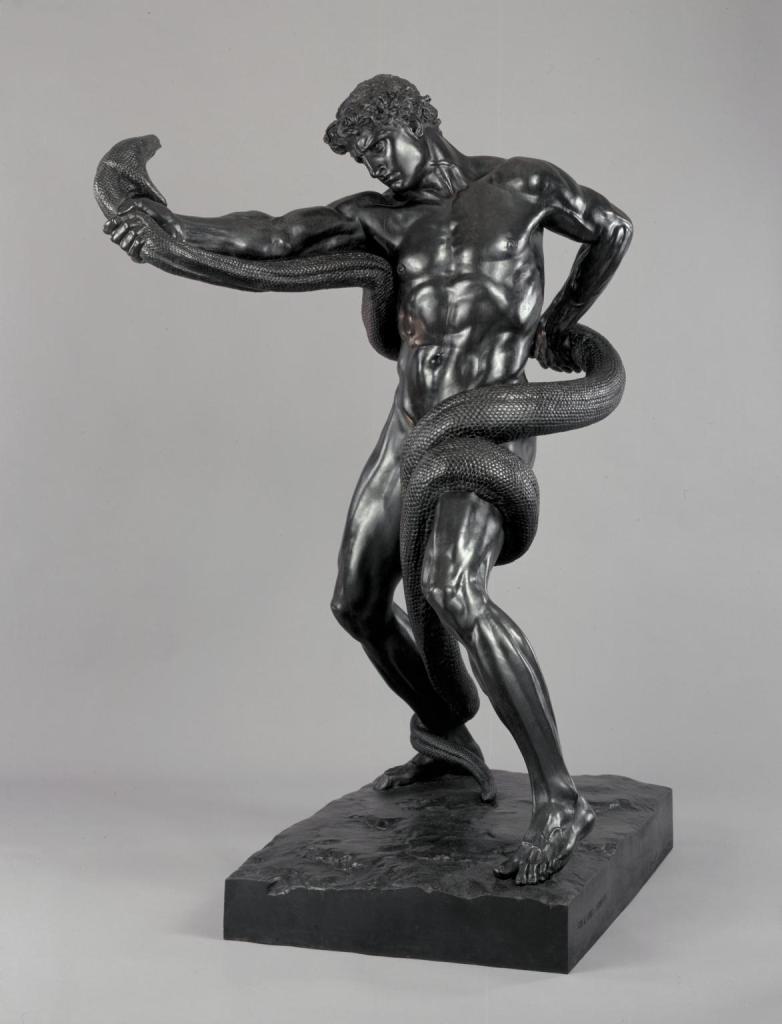
An Athlete Wrestling with a Python 1877 Frederic, Lord Leighton 1830-1896 Presented by the Trustees of the Chantrey Bequest 1877 http://www.tate.org.uk/art/work/N01754 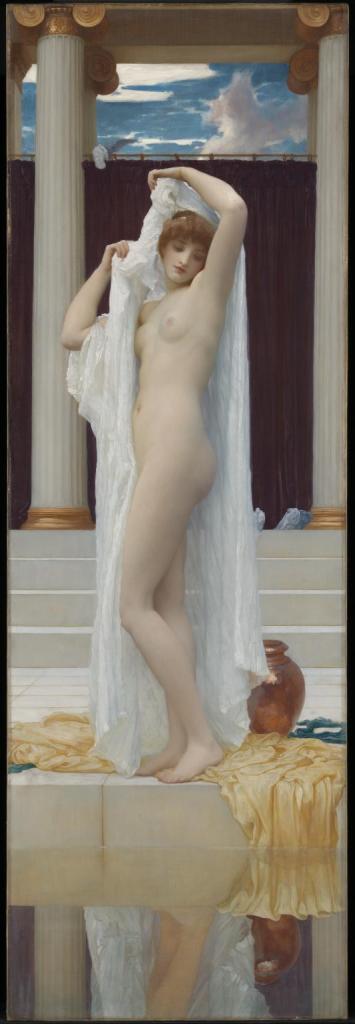
The Bath of Psyche exhibited 1890 Frederic, Lord Leighton 1830-1896 Presented by the Trustees of the Chantrey Bequest 1890 http://www.tate.org.uk/art/work/N01574
The movement began in reaction to prevailing utilitarian social philosophies and to what was perceived as the ugliness and philistinism of the industrial age. In England, the artists of the Pre-Raphaelite Brotherhood, from 1848, had sown the seeds of Aestheticism, and the work of Dante Gabriel Rossetti, Edward Burne-Jones, and Algernon Charles Swinburne exhibited it and expressed a yearning for ideal beauty through conscious medievalism. The painter James McNeill Whistler raised the movement’s ideal of the cultivation of refined sensibility to perhaps its highest point.
The roots of Aestheticism can be traced back to the 1860’s; however, it was not until the 1880’s that the movement gained noticeable popularity. The Aesthetic movement is often associated with the French term “fin de siècle,” or the “end of the century,” which refers to the closing of an existing era and implies the beginning of a new one. It is often used to describe late 19th century Britain, a time when the ideals of the Victorian Age were losing precedence and being replaced by Aesthetic values. The Aesthetic movement denounced the sober morality and middle-class values that characterized the Victorian Age and embraced beauty as the chief pursuit of both art and life.
The Aesthetic Movement provided a challenge to the Victorian public when it declared that art was divorced from any moral or narrative content. In an era when art was supposed to tell a story, the idea that a simple expression of mood or something merely beautiful to look at could be considered a work of art was radical. In its assertion that a work of art can be divorced from narrative, the ideas of the Aesthetic Movement paved the road towards Modern Art. The movement is often considered to have ended with Oscar Wilde’s trials, which began in 1895.
Modern Day Aestheticism
Although aestheticism emerged more than 150 years ago, it’s still active today and very powerful too. Every time an art movement rejects pure aesthetical approach towards art, supporters of aestheticism raise their voices, questioning the quality of such art. So, aestheticism is not some art movement that existed in history and disappeared into oblivion – it’s still alive.
There are no specific names from the world of contemporary art today that would fit into the genre of aestheticism because artists usually tend to distance themselves from this movement. Apparently majority of contemporary artists reject basic principles and ideas of aestheticism.
Still, the movement is quite vivid, particularly its intellectual side. If we take a look at the contemporary art scene, we will see that the vast majority of pieces that are popular could not be labeled as products of aestheticism. In my personal opinion there are enough artists who create art with the sole purpose of making something beautiful without any deeper meaning behind it. Here are a few of my favorite art pieces which I feel fit the bill of aesthetic art. I hope you all will appreciate them for their sheer beauty as much as I do!
DISCLAIMER – All the information, data and imagery in this blog post is for informational and educational purpose only. While there may be copyrighted material the use of which has not always been specifically authorized by the copyright owner, I have only made it available with the sole effort to stimulate creative progress and artistic enrichment. Some images may have been taken from the links included below and I give full credit to these websites/pages, thereby in no way claiming them to be my own. I have also used these links for reference purposes and collection of data; therefore I give full credit to the respective web pages. Most of the data in this post is based on my personal experiences and opinions and I am not responsible for any material that is found in the links at the end of this post.
Sources and Photo Credits –
https://www.tate.org.uk/art/art-terms/a/aesthetic-movement
https://www.britannica.com/art/Aestheticism







interesting reading ! and a lovely set of art work! it is an interesting concept, whether or not there should be a higher purpose to art and sometimes i agree that it need not be, because even without purpose, it can bring joy to the beholder!
LikeLiked by 1 person